Malaysian Airlines flies people to their capital Kuala Lumpur in exactly 5 hours from Mumbai, the flight taking off at night, and stretching into the capital at sunrise. A city of dazzling contrasts. Kuala Lumpur’s rich past stands in union with its complete modern ambience in the present. It is the very centre of commerce in the country and is home to a population of 1.6 million people. Only a few speak English, but the highly comprehensive transport system makes it possible for tourists to get around with ease. Stunning skyscrapers alongside themed attractions and places of worship enthrall the eager traveler.
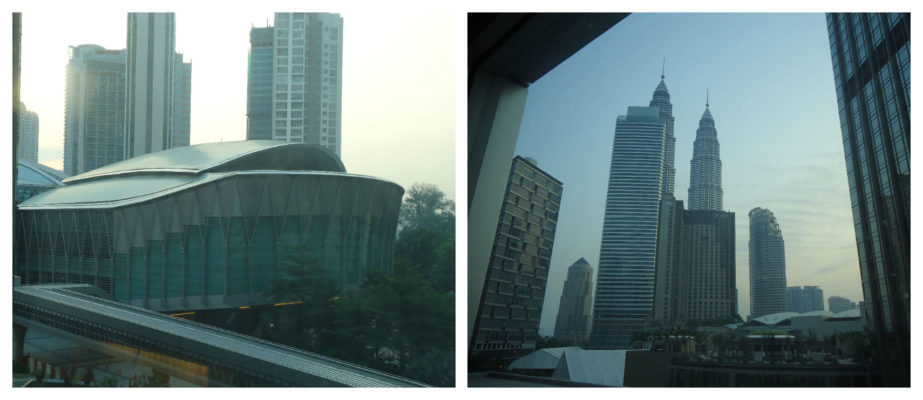
Accommodation
As is every traveler’s concern, living in a city has to be comfortable and affordable. Malaysia offers so many choices, from five star living to budget hotels, as well as the no frills hotels that have become so wanted these days. The Impiana KLCC (Jalan Pinang) proved to be bang in the business district, nestled between the Sheraton and the Hyatt, making a little bit of the sightseeing an absolute cake walk.
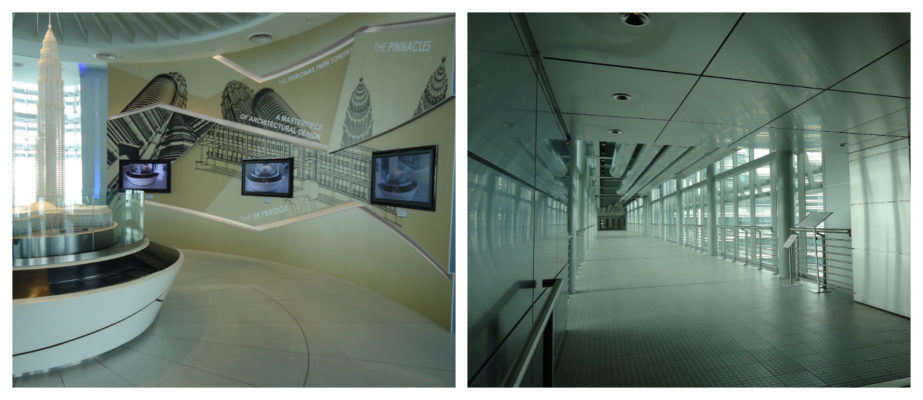
Landmarks
Looking out of the hotel window, one sights the steel and glass Petronas Twin Towers, majestically reaching out towards the open sky. At a height of 451.9 meters, the towers are not known as the Icons of Modern Malaysia for nothing. Visiting the sky bridge on the 41st floor brings that exhilarating feeling of being at the very top of the world. The towers are home to the state of the art Kuala Lumpur Convention Centre, the Suria KLCC Mall, a five star hotel, the immaculately landscaped KLCC Park and even a mosque.
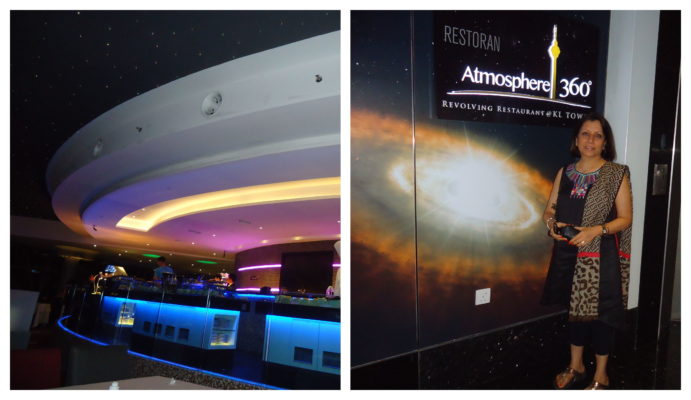
Dinner at 360 Degrees, the revolving restaurant at the KL Tower in Jalan Puncak is a huge tourist attraction. This Communication Tower, atop Bukit Nanas is the world’s 6th tallest (421 m). The Central Market (Pasar Seni) has gone from being a wholesale and retail market to now the leading crafts centre in the city. Lebuh Ampang was the traditional preserve of the Chettiars (South Indian moneylenders) and is now filled with restaurants and textile shops. KL of course could not be without Chinatown (Petaling Street, housing hawkers and the like). Shopping is at its best here.
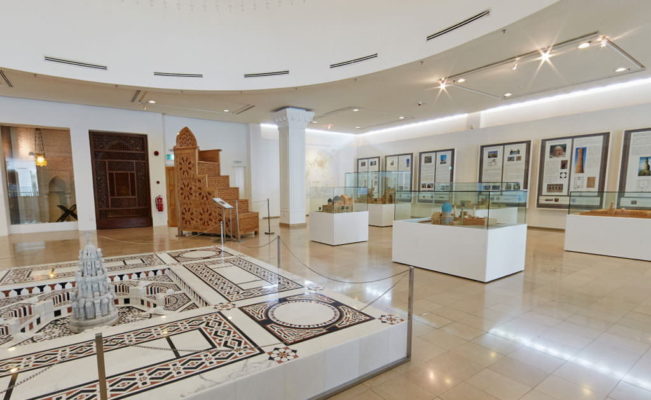
Museums
The Islamic Arts Museum has various themed galleries showcasing treasures like Islamic manuscripts, ceramics and glassware, metalwork, armours, textiles and coins. Malaysian crafts can be seen at The Cultural Arts Museum. Asian artists are displayed at the Asian Arts Museum. ‘Jade’ known as the stone of heaven and having healing powers is seen in all its avatars at the Jade Museum.
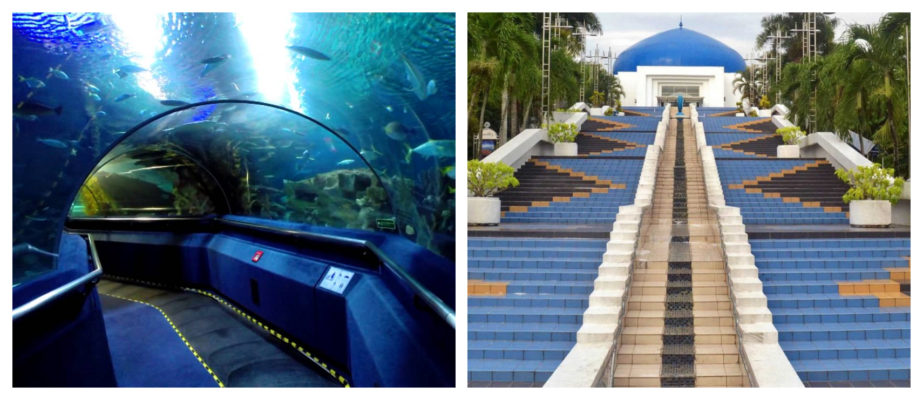
Themed Attractions
The climate in Malaysia is tropical and the weather is warm all year round. Known for its water life, people visiting KL can easily explore the mysteries of the ocean without having to leave the city. Aquaria KLCC, reputed to be the largest aquarium in the world, covers 5000 sq ft, and showcases 150 species from various parts of the world, the highlight being a 90 meter long tunnel for visitors. Also worth visiting are the National Planetarium and the National Science Centre.
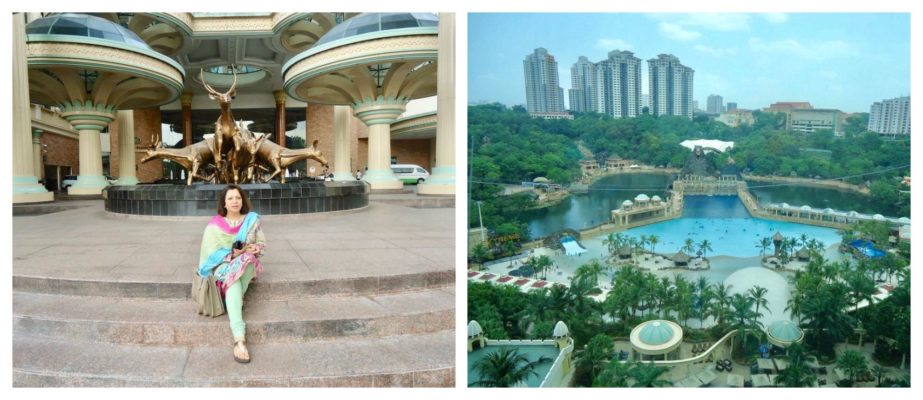
Theme Parks
The Berjaya Times Square Theme Park is spread over 133,000 sq ft and is an indoor theme park. A day spent at the Sunway Lagoon, does not cover the whole place, since it has a host of water and land attractions, and is situated at the suburb of Bandar Sunway. The entire Sunway Lagoon can be seen from the world’s largest pedestrian suspension bridge at 428 m. One of the longest uphill water coasters in Asia – The Thunderbolt is found at the Desa Water Park.
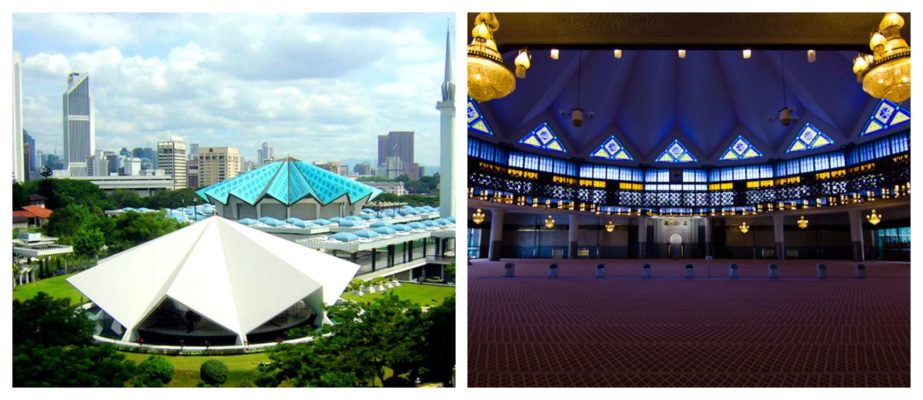
Religious Route
Islam is the official religion, but all other religions are practiced freely. The National Mosque (Masjid Negara), is one of the most distinguished of the mosques in KL. Visitors are of course asked to be appropriately dressed, and robes and headscarves are provided to the ladies. To meet the Chinese mindset is the Thean Hou Temple. Situated on a hillock, and magnificent in its structure of roofed pagodas and stringed lanterns, it houses three majestic deities, and statues of the 12 animals of the Zodiac. The oldest Taoist temple-Sze Ya Temple, pays tribute to the deities-Sin Sze ya and Si Sze ya.
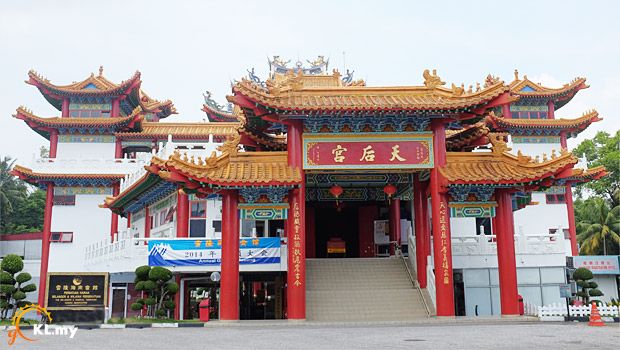
The South Indians are not far behind with the stunning Sri Maha Mariamman Temple, which is one of the oldest and most elaborate structures in the country. Here the Hindu Goddess Maha Mariamman is embellished with gold and precious stones. And finally for the Christians, the Cathedral of Saint Mary the Virgin is a fine example of early English Gothic Architecture.
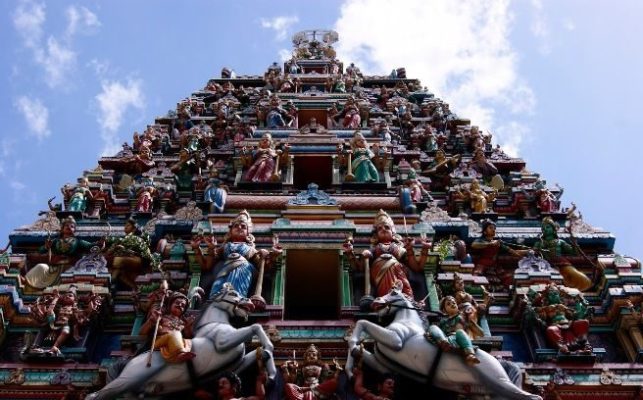
Festivals
Having such a diverse population, a mix of so many different cultures and religions, one is not so surprised that so many festivals are celebrated with so much aplomb. Ramadan is celebrated owing to the country being a Muslim dominant one, with Hari Raya Aidilfitri at the end of the fasting month. Completing a pilgrimage to Mecca is celebrated with Hari Raya Aidiladha, where lambs are sacrificed and the poor are fed.
Hindus celebrate Deepavali with prayers and merrymaking, as do the Chinese with their Lunar New Year, with the children receiving red packets (ang pow) of money from their elders. The Christian Community attends their services in church on Christmas. The Buddhists cannot be far behind with their Wesak Day, celebrating Buddha’s birth, enlightenment and death. Thaipusam, a Hindu festival is celebrated in the honor of Lord Muruga.
Shopping
Kuala Lumpur is known for its fabulous shopping deals. A wide range of one stop shopping malls dot the city. What is interesting is that the malls are all conveniently situated near the hotels and the public transport facilities. Open air and casual street shops suit every taste and budget.
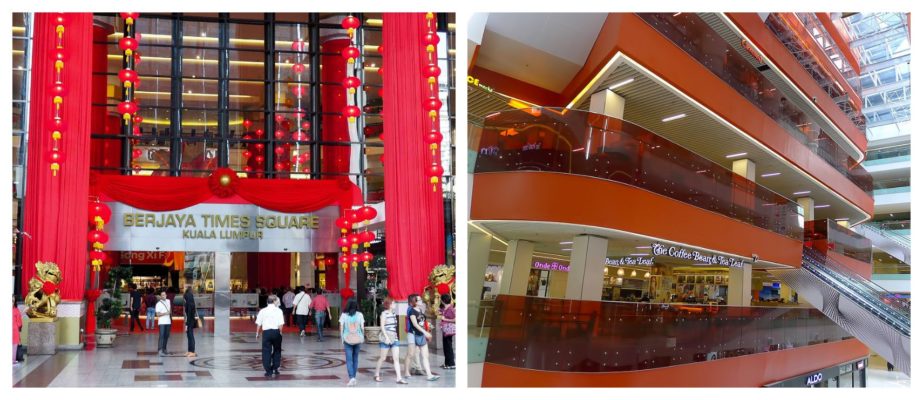
All the bargains and the irresistible deals begin when they have the Malaysia Mega Sale Carnivals. Some of the major shopping areas are Bukit Bintang Plaza, Sungei Wang Plaza, Berjaya Times Square (3,450,000 sq ft), Suria KLCC, and Sunway Putra Mall to name a few. Popular Malaysian souvenirs worth a bring home are Batiks (hand drawn or printed), Songket (fabric laced with gold or silver threadwork), Pewter ware, Woodcarvings, Pottery and Ceramics.
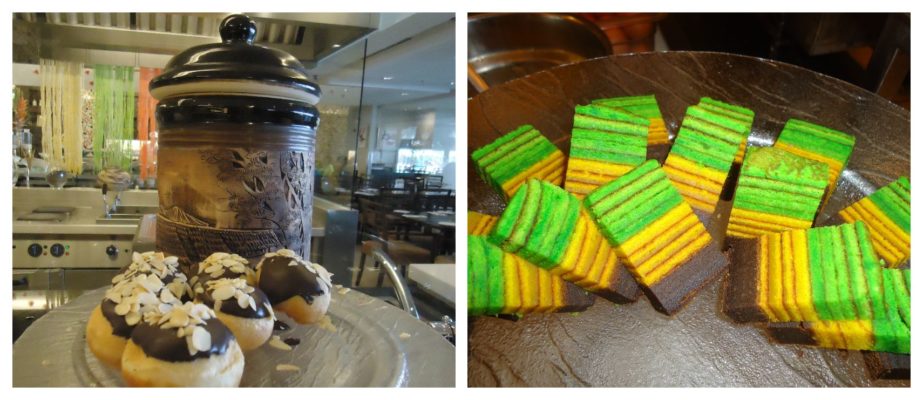
Cuisine
Traditional Malay food is searingly spicy. The Chinese food ranges from Cantonese, Szechuan, Hokkein and Hainanese. Indian Cuisine that is available consists of both northern and southern delicacies. Mamak cuisine, which is actually of Indian Muslim origin, comprises of thick spicy dishes. Major hotels in the city also serve Korean, Japanese, Vietnamese, Thai, Indonesian, Middle Eastern, Italian and Continental fare.
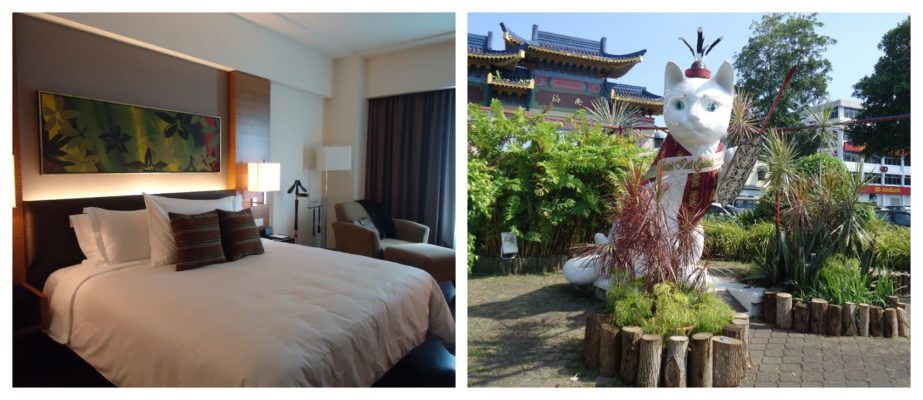
Kuching, Sarawak – Borneo Sarawak is the land of the hornbills, and is located on the island of Borneo, north of the Equator. Beautiful blue skies and sandy beaches greet us, as does the Kuching Cat right in front of our hotel – The Grand Magherita. A story that intrigues us, tells us that the locals are sedentary farmers, who live in traditional Longhouses. This state has diverse ethnic groups, a variety of religions and 45 different languages.
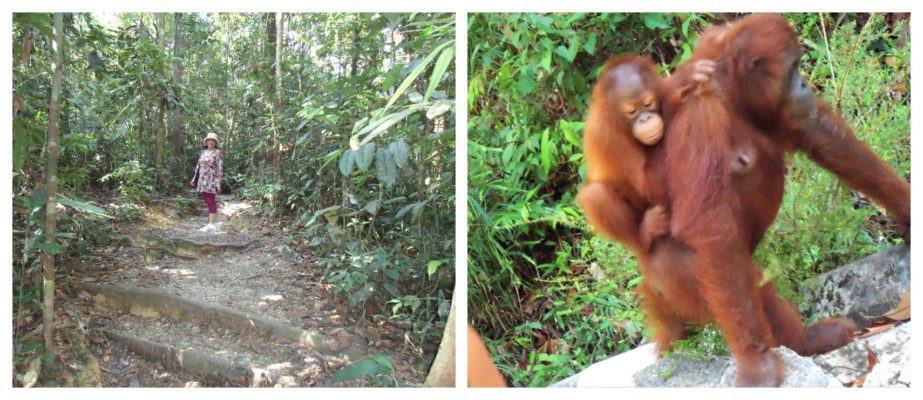
Sarawak’s rainforests maintain the wild life that so many from around the world come to see. Known as the ‘Man of the Forest’, the Orangutan (an endangered species) can only be seen in Borneo and Sumatra. The Semenggogh Wildlife Centre rehabilitates wild animals that have been orphaned, injured, or captured. The best time to see them at close range is in the morning when they get fed. The centre also houses rescued gibbons, porcupines, crocodiles, and river terrapins.
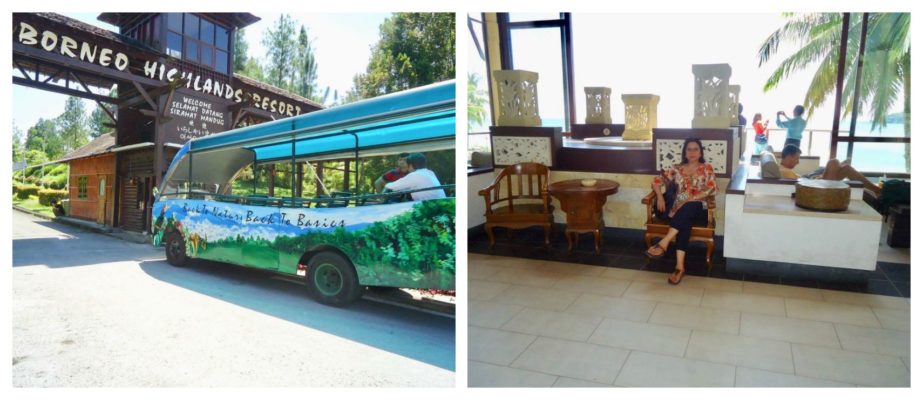
Tea at the Borneo Highlands Resort was like a journey back to nature, to basics. It was definitely a break from the hectic demands of modern living. The resort is bang right in the midst of the world’s oldest and 2nd largest tropical rainforest. It houses one of the most picturesque golf courses in the region.
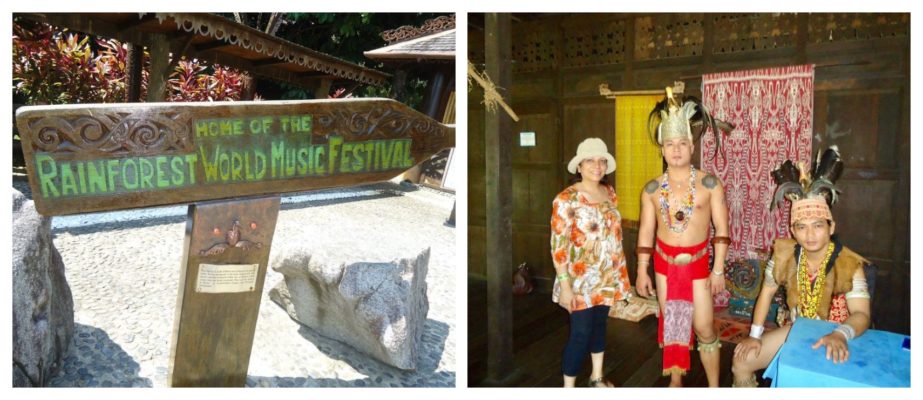
The Santubong Wildlife Cruise takes us down the Salak River to see the Irrawaddy Dolphins. Along the way we see the mangroves as we search for the park’s wildlife. It is a mere 35 minutes from the Damai Beach.
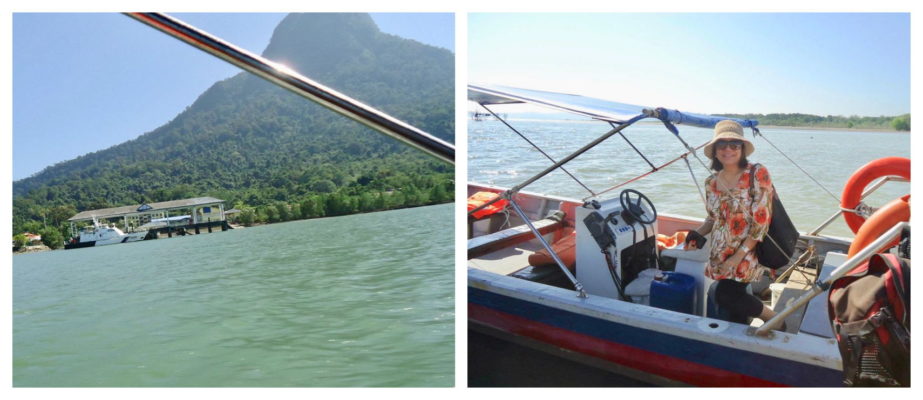
In the Sarawak Cultural Village we are offered the Tuak (rice wine) on arrival and witness the traditional dances by the tribal’s themselves. An overnight stay at a longhouse helps us observe a living museum of the traditional way of life of a major ethnic group.
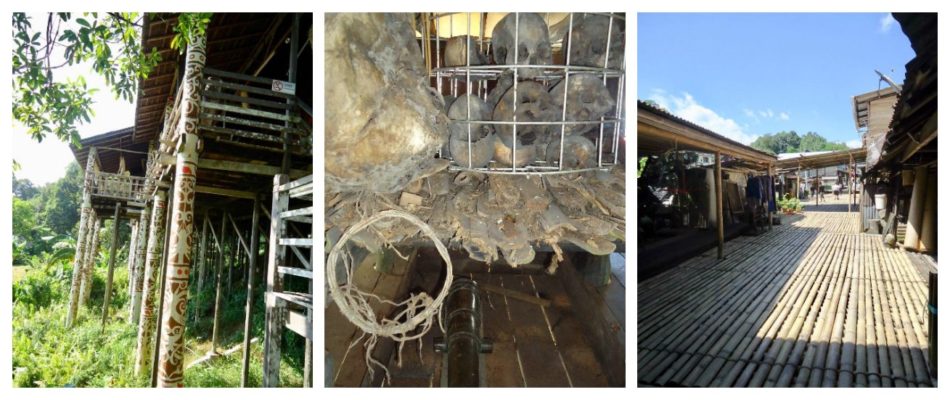
Of course we have only touched just the tip of the iceberg, since there is a wealth of country waiting to be discovered over time. A mere glimpse of what is in store for us is evident with this short trip to Malaysia this summer. We have only just discovered the magic of the Malay People.
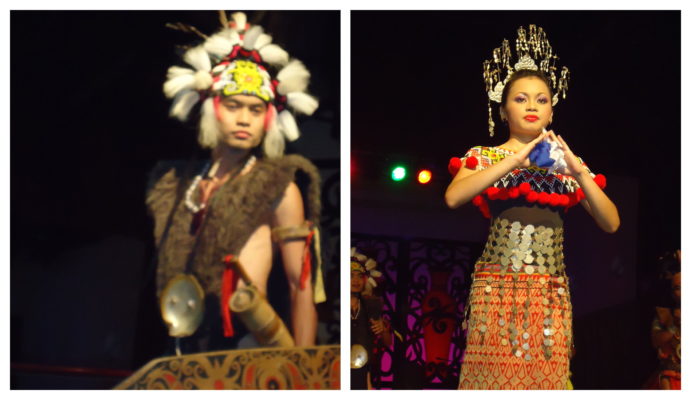
Previously Published In The Sindhian
Image Credits : Maya Lalchandani, Google



